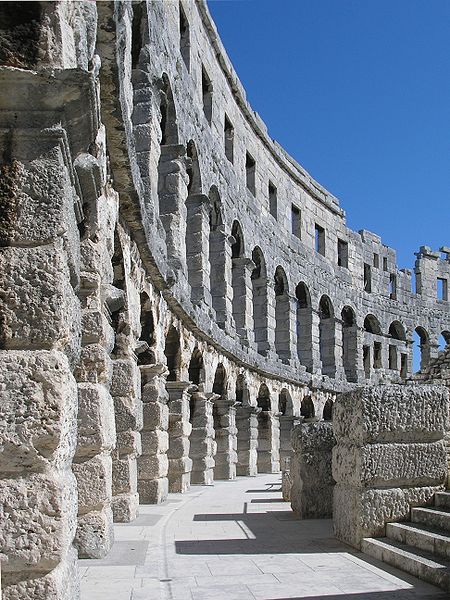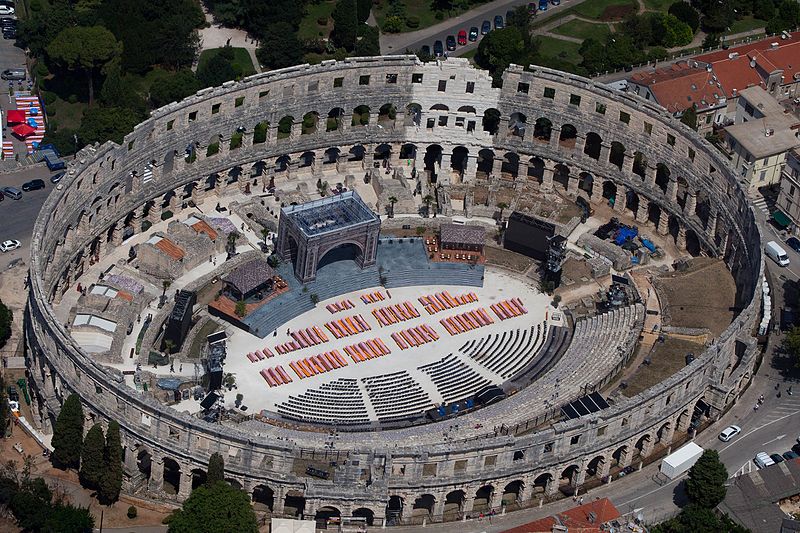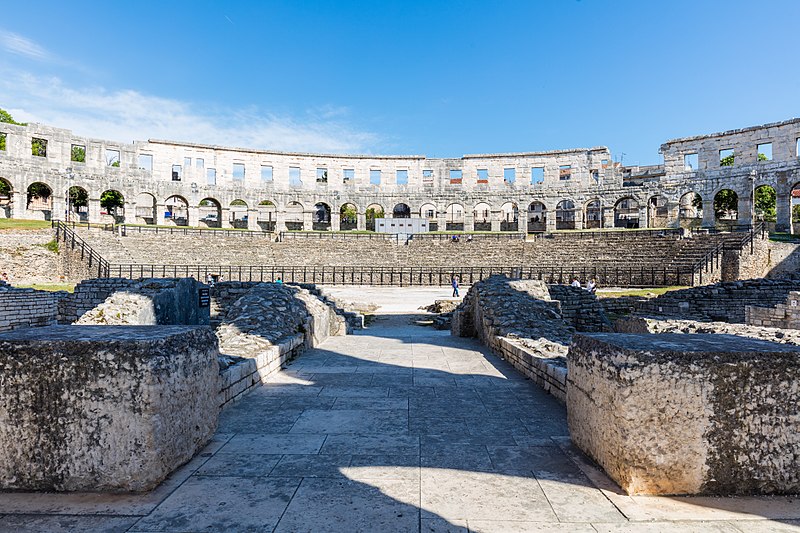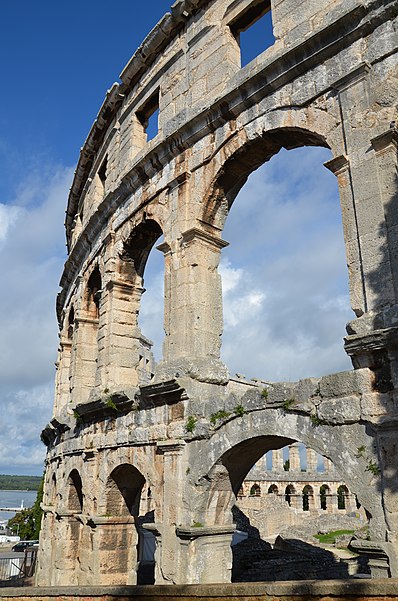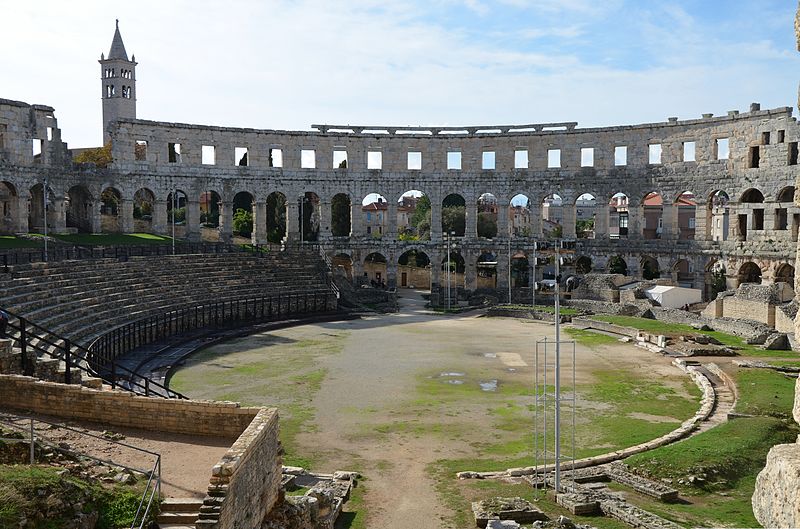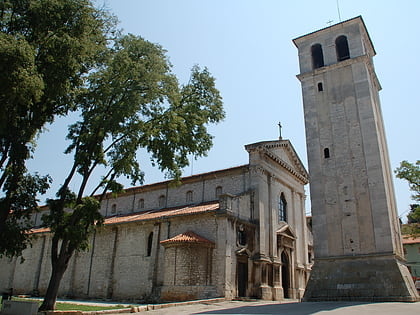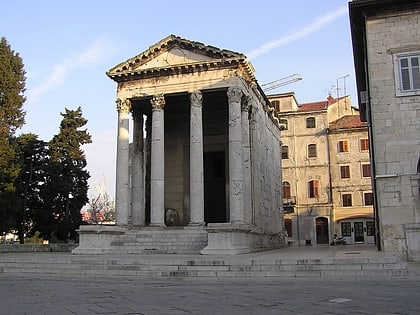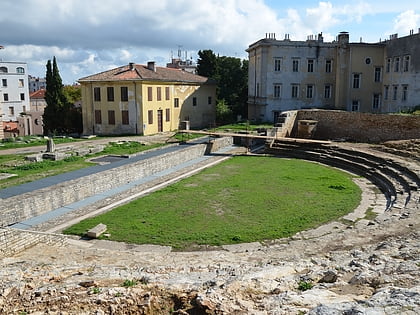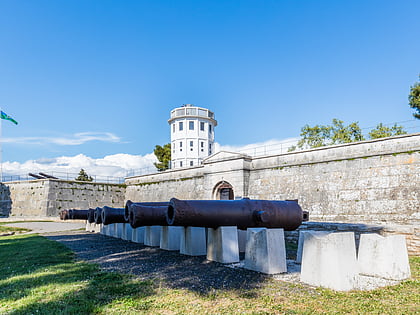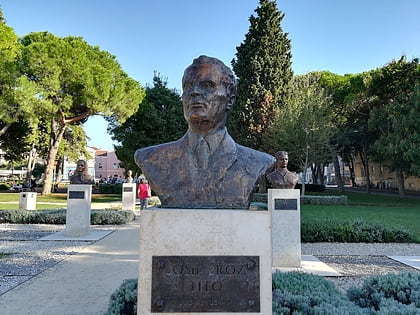Amphitheater, Pula
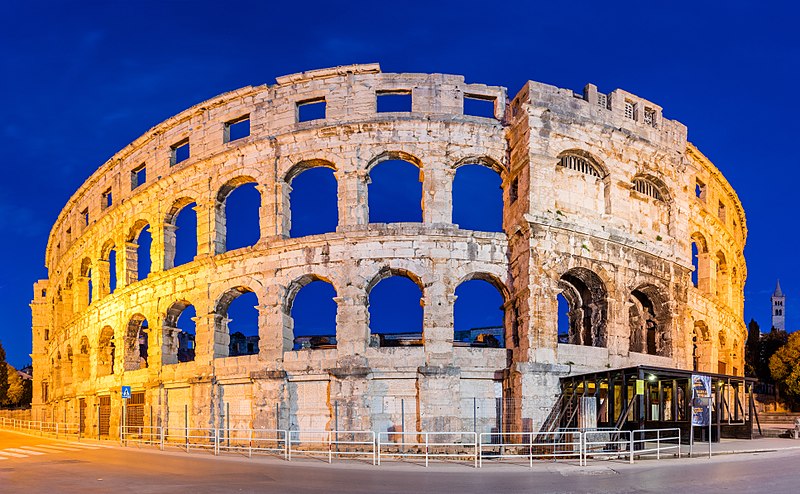
Facts and practical information
The Pula Arena stands as a monumental testament to the grandeur of Roman architecture and engineering. Located in the coastal city of Pula, Croatia, this ancient amphitheatre is among the world's largest surviving Roman arenas and the best-preserved ancient monument in Croatia. Constructed in the 1st century AD during the reign of Emperor Vespasian, it was built to host gladiatorial contests and could accommodate approximately 20,000 spectators.
Remarkable for its ellipsoidal shape, the Pula Arena is an impressive structure, with its walls reaching up to 32.5 meters in height. The amphitheatre is constructed primarily of local limestone, with its four side towers once serving as the corners of the complex. These towers contained the mechanisms and stairwells necessary for the functioning of the arena, including the intricate system that was used to lift animals and gladiators to the arena floor.
Today, the Pula Arena is not only a significant historical and architectural landmark but also serves as a versatile venue for a variety of cultural events, including the Pula Film Festival, concerts, and theatrical performances, allowing visitors to experience the amphitheatre's remarkable acoustics and atmosphere. Its underground passages, once used by gladiators, now house a museum where visitors can learn about the amphitheatre's history and the olive oil production that was once a vital part of the region's economy.
Amphitheater – popular in the area (distance from the attraction)
Nearby attractions include: Pula Cathedral, Temple of Augustus, Arco dei Sergi, Monastery and Church of St. Francis in Pula.
Frequently Asked Questions (FAQ)
Which popular attractions are close to Amphitheater?
How to get to Amphitheater by public transport?
Bus
- Starih Statuta • Lines: 25b, 25c (5 min walk)
- Giardini • Lines: 22, 25b, 25c (7 min walk)
Train
- Pula (12 min walk)
- Šijana (34 min walk)


